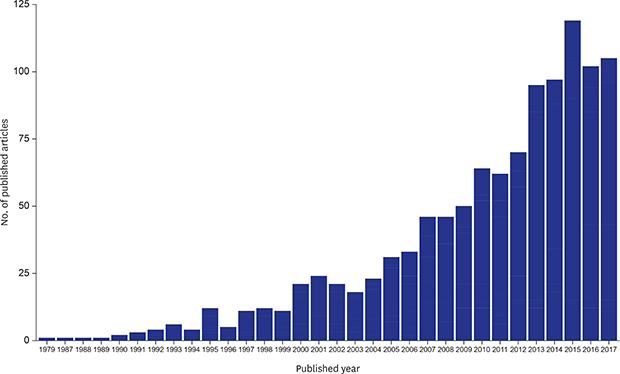1. Nafade V, Nash M, Huddart S, Pande T, Gebreselassie N, Lienhardt C, et al. A bibliometric analysis of tuberculosis research, 2007–2016. PLoS One. 2018; 13(6):e0199706.

2. World Health Organization. Global Tuberculosis Report 2018. License: CC BY-NC-SA 3.0 IGO. Geneva: World Health Organization;2018.
3. Nemes E, Geldenhuys H, Rozot V, Rutkowski KT, Ratangee F, Bilek N, et al. Prevention of
M. tuberculosis infection with H4:IC31 vaccine or BCG revaccination. N Engl J Med. 2018; 379(2):138–149.


4. Karonga Prevention Trial Group. Randomised controlled trial of single BCG, repeated BCG, or combined BCG and killed Mycobacterium leprae vaccine for prevention of leprosy and tuberculosis in Malawi. Lancet. 1996; 348(9019):17–24.

5. Yates TA, Khan PY, Knight GM, Taylor JG, McHugh TD, Lipman M, et al. The transmission of
Mycobacterium tuberculosis in high burden settings. Lancet Infect Dis. 2016; 16(2):227–238.

7. Lange C, Chesov D, Heyckendorf J, Leung CC, Udwadia Z, Dheda K. Drug-resistant tuberculosis: an update on disease burden, diagnosis and treatment. Respirology. 2018; 23(7):656–673.


8. Pawlowski A, Jansson M, Sköld M, Rottenberg ME, Källenius G. Tuberculosis and HIV co-infection. PLoS Pathog. 2012; 8(2):e1002464.

10. Cho KS. Tuberculosis control in the Republic of Korea. Health Soc Welfare Rev. 2017; 37(4):179–212.

12. Wallin JA. Bibliometric methods: pitfalls and possibilities. Basic Clin Pharmacol Toxicol. 2005; 97(5):261–275.


13. Röhrig B, du Prel JB, Wachtlin D, Blettner M. Types of study in medical research: part 3 of a series on evaluation of scientific publications. Dtsch Arztebl Int. 2009; 106(15):262–268.


14. Seo HJ, Kim SY, Lee YJ, Jang BH, Park JE, Sheen SS, et al. A newly developed tool for classifying study designs in systematic reviews of interventions and exposures showed substantial reliability and validity. J Clin Epidemiol. 2016; 70:200–205.


16. Cox DR, Stuart AJ. Some quick sign tests for trend in location and dispersion. Biometrika. 1955; 42(1/2):80–95.

17. Kim YY, Ko CU, Lee SW, Kwak BM. Replacement arthroplasty using the Charnley prosthesis in old tuberculosis of the hip. Int Orthop. 1979; 3(1):81–88.


18. Moon MS, Kim I, Woo YK, Park YO. Conservative treatment of tuberculosis of the thoracic and lumbar spine in adults and children. Int Orthop. 1987; 11(4):315–322.


19. Yuk JM, Shin DM, Lee HM, Yang CS, Jin HS, Kim KK, et al. Vitamin D3 induces autophagy in human monocytes/macrophages via cathelicidin. Cell Host Microbe. 2009; 6(3):231–243.


20. Kang YA, Lee HW, Yoon HI, Cho B, Han SK, Shim YS, et al. Discrepancy between the tuberculin skin test and the whole-blood interferon gamma assay for the diagnosis of latent tuberculosis infection in an intermediate tuberculosis-burden country. JAMA. 2005; 293(22):2756–2761.
21. Ramos JM, Padilla S, Masiá M, Gutiérrez F. A bibliometric analysis of tuberculosis research indexed in PubMed, 1997–2006. Int J Tuberc Lung Dis. 2008; 12(12):1461–1468.

23. Frick M, Lessem E. Tuberculosis Research Funding Trends, 2005–2017. New York, NY: Treatment Action Group;2018.
25. Lal SS, Uplekar M, Katz I, Lonnroth K, Komatsu R, Yesudian Dias HM, et al. Global Fund financing of public-private mix approaches for delivery of tuberculosis care. Trop Med Int Health. 2011; 16(6):685–692.


26. van Raan AF. Fatal attraction: conceptual and methodological problems in the ranking of universities by bibliometric methods. Scientometrics. 2005; 62(1):133–143.

27. Garfield E. The history and meaning of the journal impact factor. JAMA. 2006; 295(1):90–93.









 PDF
PDF Citation
Citation Print
Print








 XML Download
XML Download